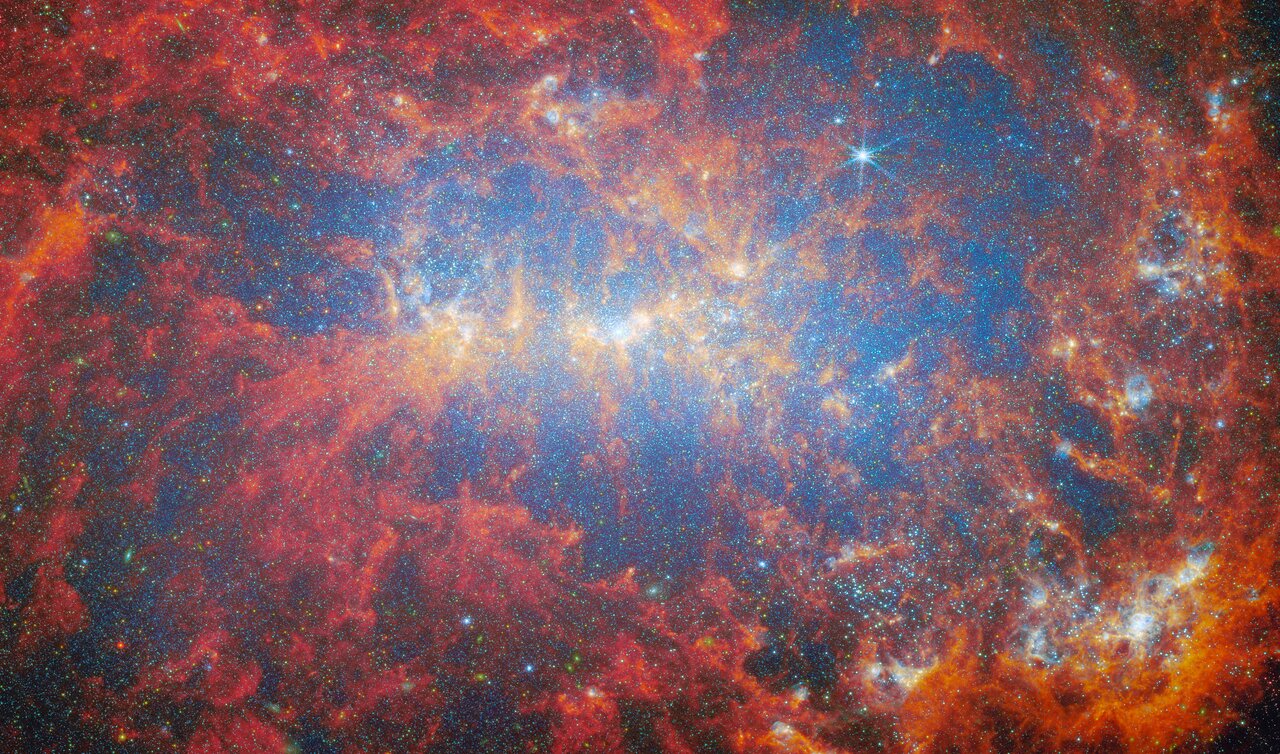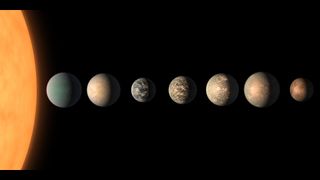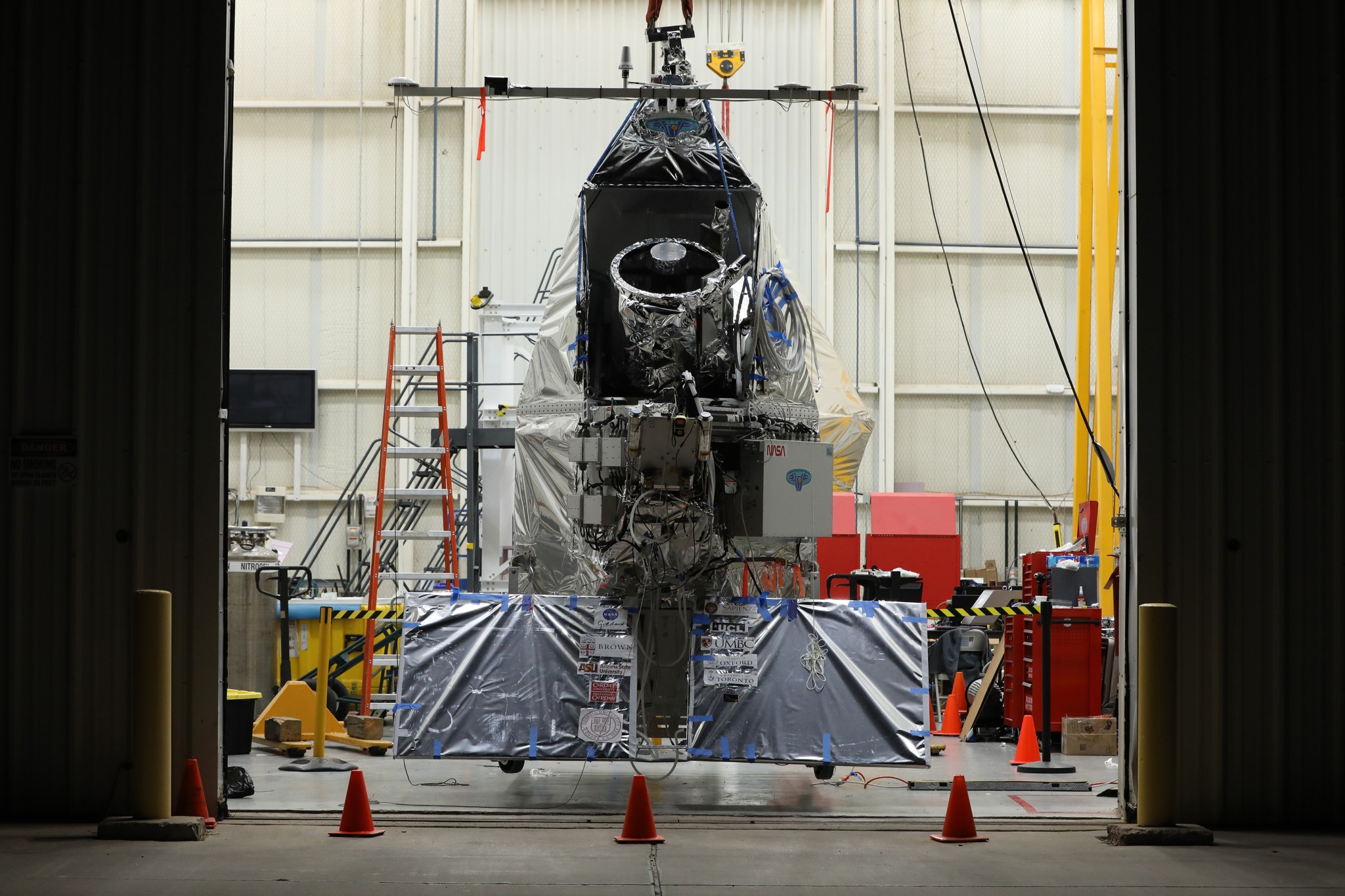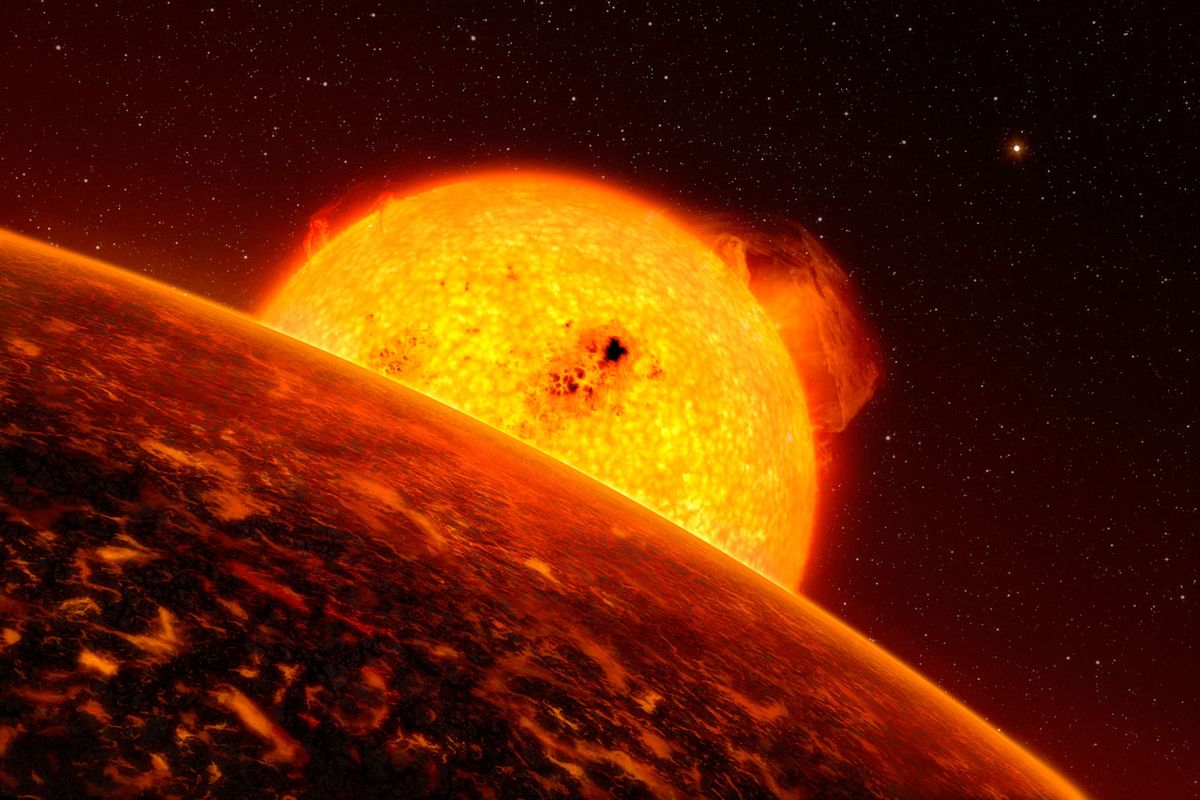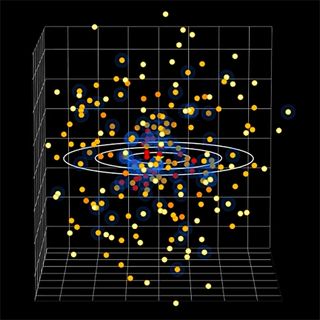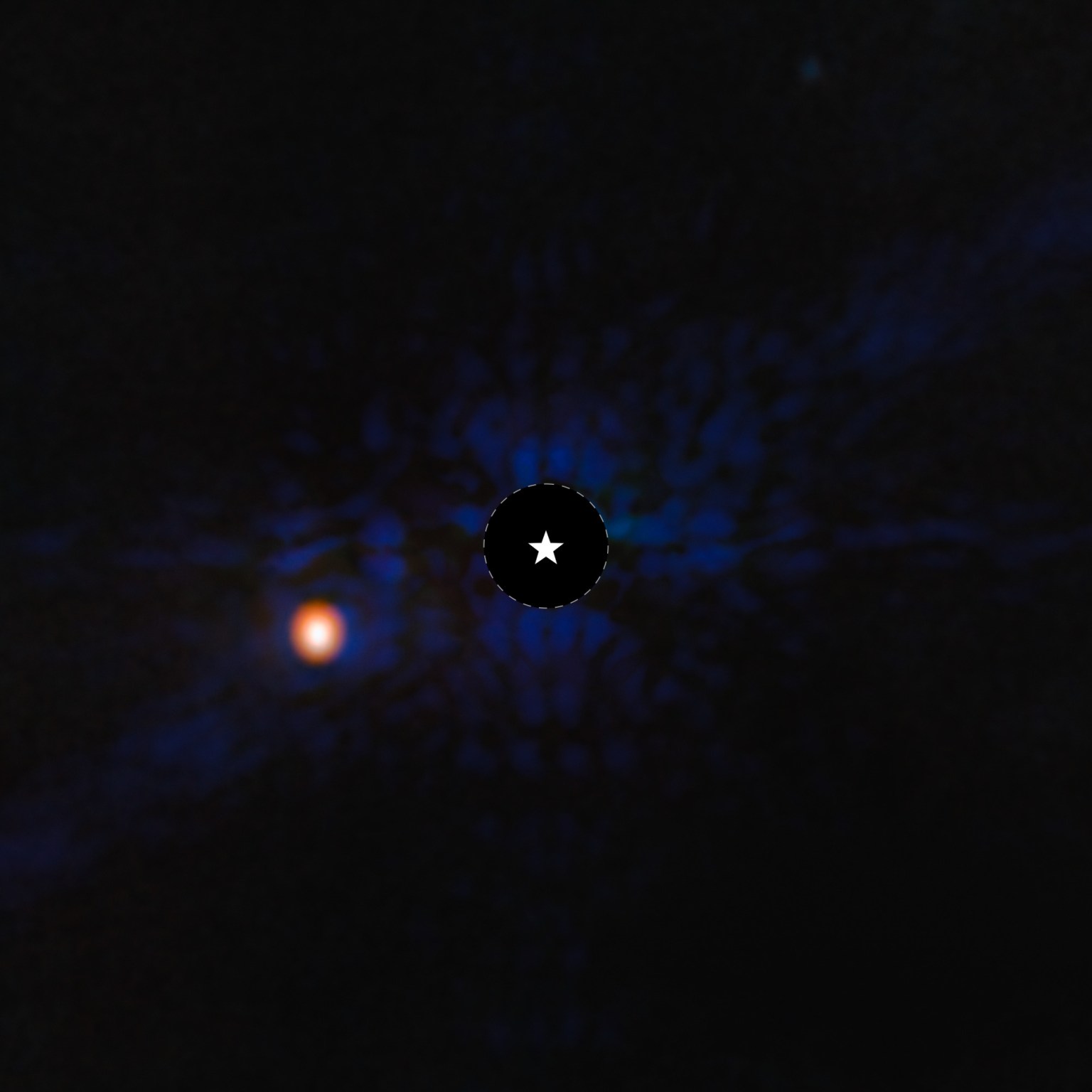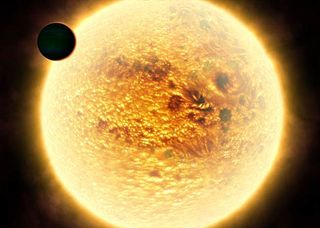This image from NASA’s James Webb Space Telescope shows the dwarf galaxy NGC 4449. ESA/Webb, NASA & CSA, A. Adamo (Stockholm University) and the FEAST JWST team President Biden has named 19 researchers who contribute to NASA’s mission as recipients of the Presidential Early Career Award for Scientists and Engineers (PECASE). These recipients are among nearly 400 federally funded researchers receiving the honor. Established in 1996 by the National Science and Technology Council, the PECASE Award is the highest honor given by the U.S. government to scientists and engineers who…
Read MoreTag: Exoplanets
Potentially habitable planet TRAPPIST-1b may have a carbon dioxide-rich atmosphere
The innermost Earth-like planet in the famous TRAPPIST-1 system might be capable of supporting a thick atmosphere after all, according to new research. Since the system of seven tightly-packed, Earth-sized worlds was discovered in 2017, huddled in remarkable harmony just 40 light-years from Earth, astronomers have tried to determine whether any support atmosphere, which is critical to harbor life as we know it. Previous observations from the James Webb Space Telescope (JWST) have suggested all planets in the system would be barren, airless rocks thanks to violent, atmosphere-stripping radiation unleashed…
Read MoreThis exoplanet circling a dead star may mirror Earth’s fate — if our planet survives a dying sun, that is
A planetary system anchored by a dead white dwarf star, located around 4,000 light-years away, has offered astronomers a possible glimpse into what our sun and Earth could look like in around 8 billion years. However, this would only be Earth’s future if our planet manages to survive the sun’s eventual transformation into a swollen red giant. This transformation is expected to happen around 5 billion to 6 billion years from now, when the sun finally exhausts its fuel supply needed for nuclear fusion. That red giant phase will see…
Read MoreNASA’s EXCITE Mission Prepared for Scientific Balloon Flight
5 min read NASA’s EXCITE Mission Prepared for Scientific Balloon Flight Scientists and engineers are ready to fly an infrared mission called EXCITE (EXoplanet Climate Infrared TElescope) to the edge of space. EXCITE is designed to study atmospheres around exoplanets, or worlds beyond our solar system, during circumpolar long-duration scientific balloon flights. But first, it must complete a test flight during NASA’s fall 2024 scientific ballooning campaign from Fort Sumner, New Mexico. “EXCITE can give us a three-dimensional picture of a planet’s atmosphere and temperature by collecting data the whole time the world orbits…
Read MoreSome rocky exoplanets could have huge amounts of water in their molten cores
As much as 95% of an exoplanet’s water could be trapped forever deep inside its iron core, transforming what we thought we knew about water worlds and potentially rendering them even more habitable than we realized. “Planets are much more water-abundant than previously assumed,” said Caroline Dorn, who is professor of exoplanets at ETH Zurich in Switzerland, in a statement. When planets are born by accreting rubble and enduring collisions with other protoplanets, they become so hot that their entire surface is covered in an ocean of molten rock. This…
Read MoreNASA Selects 5 New Roman Technology Fellows in Astrophysics
9 min read NASA Selects 5 New Roman Technology Fellows in Astrophysics This NASA/ESA Hubble Space Telescope image treats viewers to a wonderfully detailed snapshot of the spiral galaxy NGC 3430 that lies 100 million light-years from Earth in the constellation Leo Minor. Several other galaxies, located relatively nearby to this one, are just beyond the frame of this image; one is close enough that gravitational interaction is driving some star formation in NGC 3430 – visible as bright-blue patches near to but outside of the galaxy’s main spiral structure.…
Read MoreThese nearby star systems could be good targets in the search for alien life
NASA‘s Chandra X-ray space telescope has created a three-dimensional map of stars close to the sun that may help astronomers search for alien planets that could host life. The map created by Chandra — which just celebrated 25 years in orbit but is facing a troubling budget crunch — could inform scientists which exoplanets to direct future telescopes toward to conduct searches for habitable conditions. The stars mapped by the telescope are arranged in concentric rings around the sun, at distances between 16.3 light-years and 49 light-years. This is close…
Read MoreNASA’s Webb Images Cold Exoplanet 12 Light-Years Away
6 Min Read NASA’s Webb Images Cold Exoplanet 12 Light-Years Away This image of the gas-giant exoplanet Epsilon Indi Ab was taken with the coronagraph on NASA’s James Webb Space Telescope’s MIRI (Mid-Infrared Instrument). A star symbol marks the location of the host star Epsilon Indi A, whose light has been blocked by the coronagraph, resulting in the dark circle marked with a dashed white line (full image below) An international team of astronomers using NASA’s James Webb Space Telescope has directly imaged an exoplanet roughly 12 light-years from Earth.…
Read MoreNASA’s Webb Investigates Eternal Sunrises, Sunsets on Distant World
6 Min Read NASA’s Webb Investigates Eternal Sunrises, Sunsets on Distant World Artists concept of WASP-39 b (full image below). Near-infrared spectral analysis of terminator confirms differences in morning and evening atmosphere Researchers using NASA’s James Webb Space Telescope have finally confirmed what models have previously predicted: An exoplanet has differences between its eternal morning and eternal evening atmosphere. WASP-39 b, a giant planet with a diameter 1.3 times greater than Jupiter, but similar mass to Saturn that orbits a star about 700 light-years away from Earth, is tidally locked…
Read MoreExtreme ‘hot Jupiter’ exoplanet stinks like rotten eggs and has raging glass storms
Using the James Webb Space Telescope (JWST), astronomers have discovered that one of the closest “hot Jupiter” planets to Earth stinks like rotten eggs. The planet is already infamous for its deadly rains of glass, extreme temperatures, and 5,000 mph (8,046 kph) winds that blow sideways, but this discovery makes this world seem even less friendly. The eggy JWST conclusion results from the discovery of hydrogen sulfide, a molecule that gives off the stench of rotten eggs, in the atmosphere of this extrasolar planet or “exoplanet.” This could tell scientists…
Read More